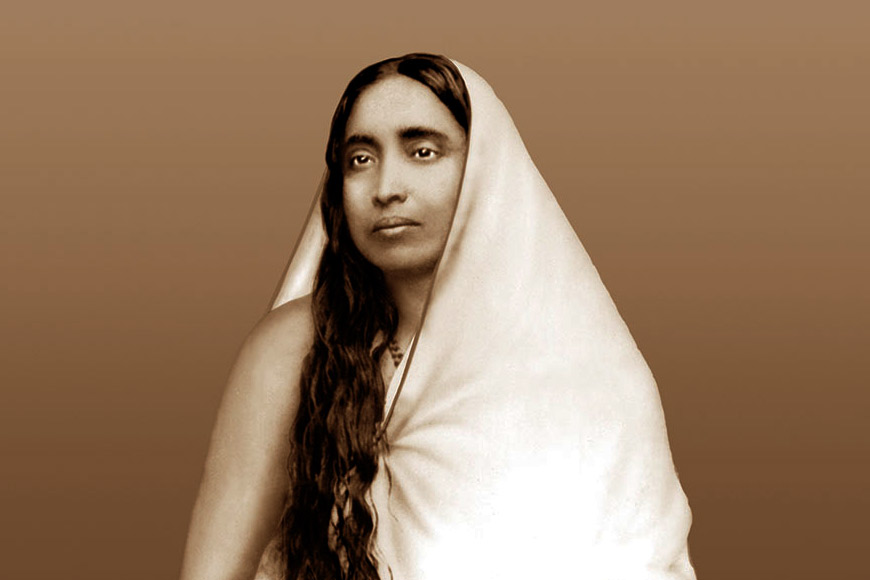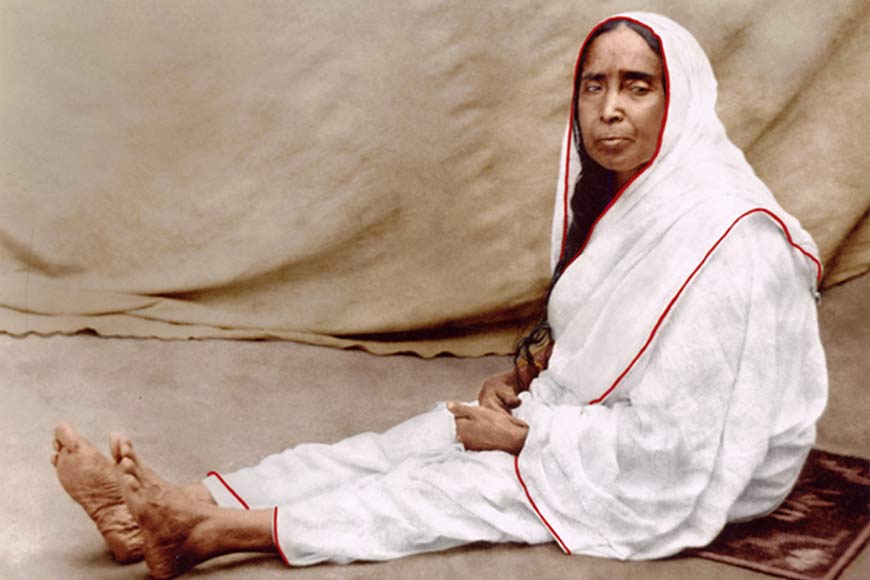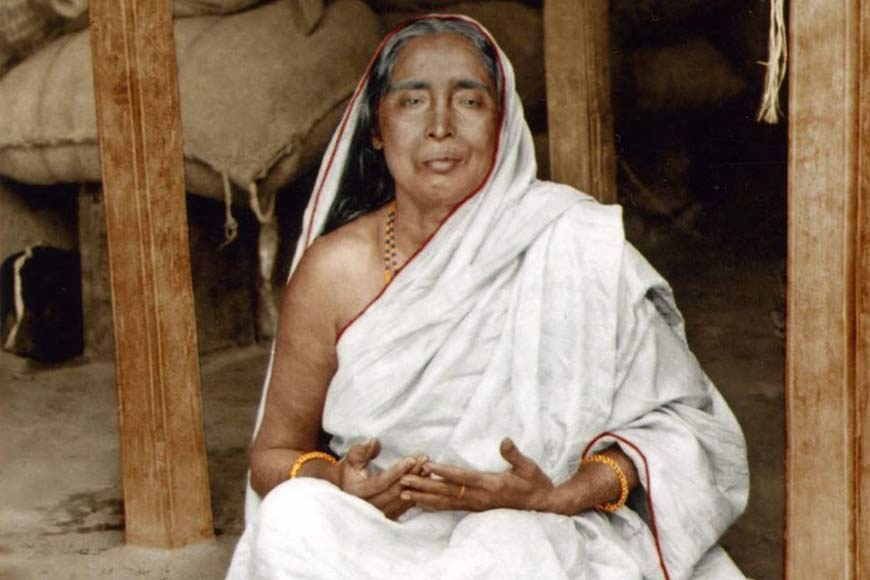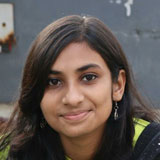Remembering on her birth anniversary, Ma Sarada – goddess or a mere mother?

It is no surprise that the women of India are portrayed in the light of patriarchy. We look at our past and try to connect women with the present. It is astonishing to see a huge number of texts defining the women of India- by Indian men. Women have been brainwashed for ages. This is true in terms of Ma Sarada as well. She is the Jagat Janani and is indeed our holy mother, but before that, she was also an ordinary person.
In “Divine Dowager” by Narasingha Prasad Sil, in-depth research had been done on Ma Sarada, her past, and her becoming. Sil introduces the Holy mother, Saradamani Chattopadhyay, as an obscure, semiliterate child-bride of Sri Ramakrishna Paramahansa. He highlighted the fact that Ma Sarada’s life story remained practically unknown during the lifetime of her famous Paramahamsa spouse, who stole the limelight.
“The entire corpus devoted to this woman’s life succeeded in dehumanizing, deifying, and consequently denaturing the story of a simple but industrious and intelligent woman who had been a victim of her God-man husband’s whimsy as his dutiful wife, an object of obsequious adoration by his disciples and devotees as a widow, and the subject of a colossal mythology constructed by hagiographers after her death.”

Durgacharan Nag, who was noted for his uncontrollable emotional outbursts of bhakti, once visited Ma Sarada. When he departed, he muttered, “Ma is kinder than Father”, he found Ma Sarada to be more compassionate than the Master had been. “Men such as the unpredictable Girish and the quite crazy Nag were the foremost and fiercest proclaimers of Sarada’s divine motherhood.”
“Sarada was of course more than a mere mother figure. She was also the inheritor of her late husband’s spiritual leadership (though not necessarily, as has been lovingly claimed, his “first and foremost disciple” or “the true inheritor of his eternal spiritual treasures”) and thus commanded, like him, the status of both guru and saint.”
Sarada’s maternal compassion and humility did not prevent her from being stern and stubborn when necessary. Possessed of abundant common sense, she was, to quote Satyen Majumdar, ‘affectionate but not feeble-minded.’ No doubt she was far from being a matriarch ruling the monastic order with an iron hand. Yet her influence on the Ramakrishna Mission was active, though covert. Her stubbornness was combined with an earthy pragmatism that often ran counter to monastic conventions and considerations.
Saradamani’s divine reputation among her devotees and disciples speaks volumes of their Bhakti. It is they who were delighted in seeing a goddess in someone whom they genuinely loved and adored. In fact, one of her disciples from East Bengal, Surendranath Bandyopadhyay, asserted categorically that Sarada was truly a mother to him and never a goddess such as Vishwajanani or Jagat Janani. Though Sarada believed herself to be really a goddess in human form, she nevertheless was almost casual and never arrogant.” Swami Prabhavananda recalls that the twice-blessed Holy Mother always stayed calm and indifferent to the worship she received from her innumerable devotees.
In the final analysis, Saradamani’s devotees blending of mother and Holy Mother exemplifies the unique unio mystica of Vaishnava spirituality that is the hallmark of Bengali devotional culture. Sarada endeared herself to her myriad of devotees, disciples, and visitors, not only as a grace-giving goddess but as a food-providing compassionate mother. She wanted women to be educated and self-reliant. When one of her female devotees lamented over her inability to get her daughter married, Sarada advised: ‘Why worry if you fail to get her married? Send her to Nivedita’s school. She will learn and be happy.’ Sarada wanted to be well-informed about her world. She was a woman with a modern outlook. She wanted to live a free life and wanted women to move towards a liberal life. She understood that if a woman has to be liberal, education is the first step.

That’s more why she encouraged young women to study. Sarada was sometimes regarded to be all-encompassing, she defied the meaningless rules at a time when many were unenlightened. She might have been a “semi-literate child bride”, yet she had more sense and virtue than most enlightened men of the contemporary age. She deliberately invited a low-caste devotee into her room, and when he hesitated to comply, pointing out his social status, she admonished him: ‘Who says you’re from a low caste? You’re my son—come in and take a seat.’
Ma Sarada has been interpreted by many in various ways. She was an ordinary human, a liberal woman, and most importantly a caregiving mother who never abandoned her children. Even after her death, her warmth stays with her devotees, as if she has retained her love for her children.
“Jananim Saradam Devim Ramakrishnam Jagadgurum
Padapadme tayoh shritwa pranamami muhurmuhu”
(I prostrate and pray again and again at the lotus feet of Ramakrishna the Teacher of the World and Sarada the Divine Mother)- Prayer of Sarada’s disciple and biographer, Durgapuri Devi, in “Sarada-Ramakrishna”.
(Source: Divine Dowager by Narashingha Prasad Sil)











